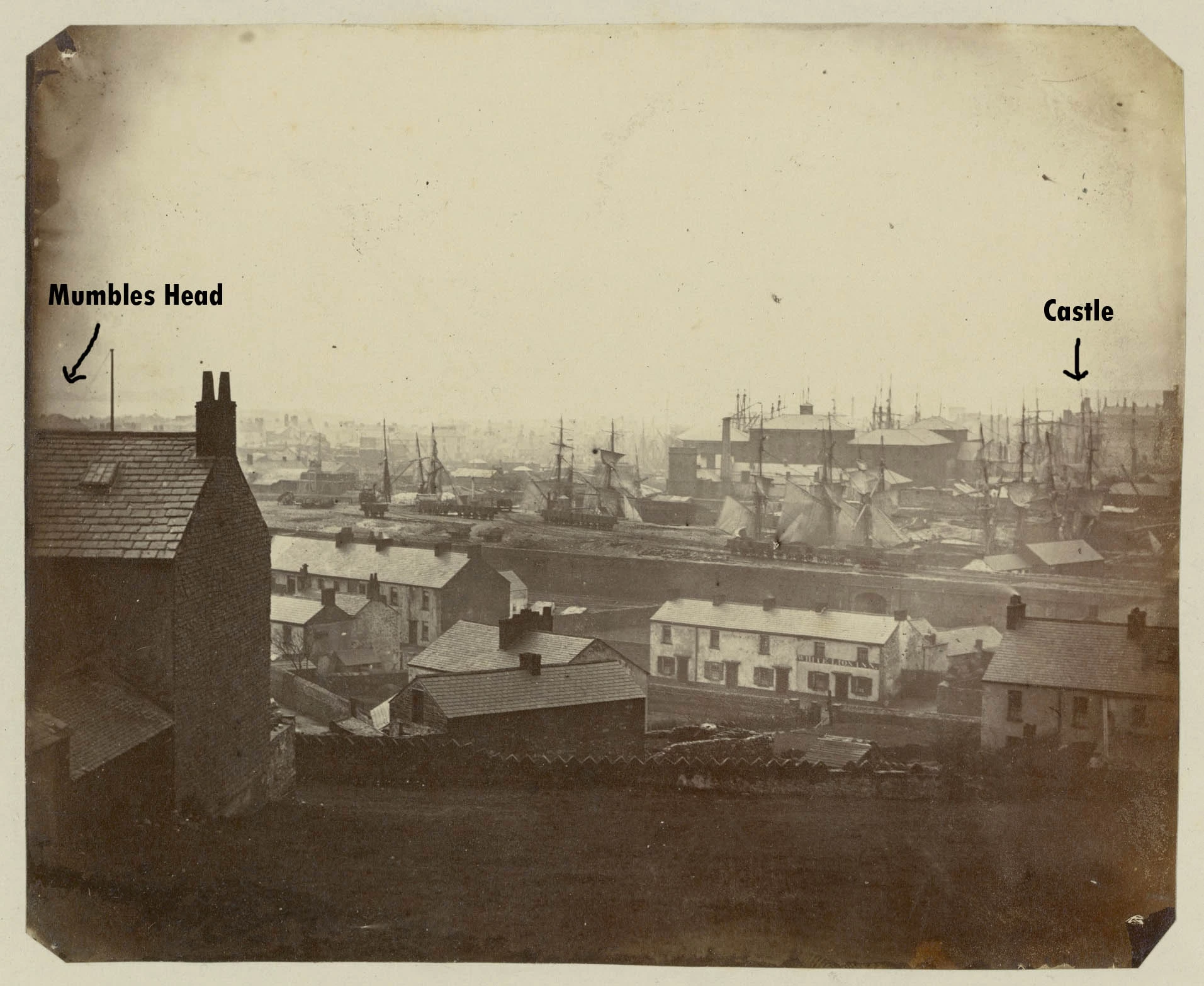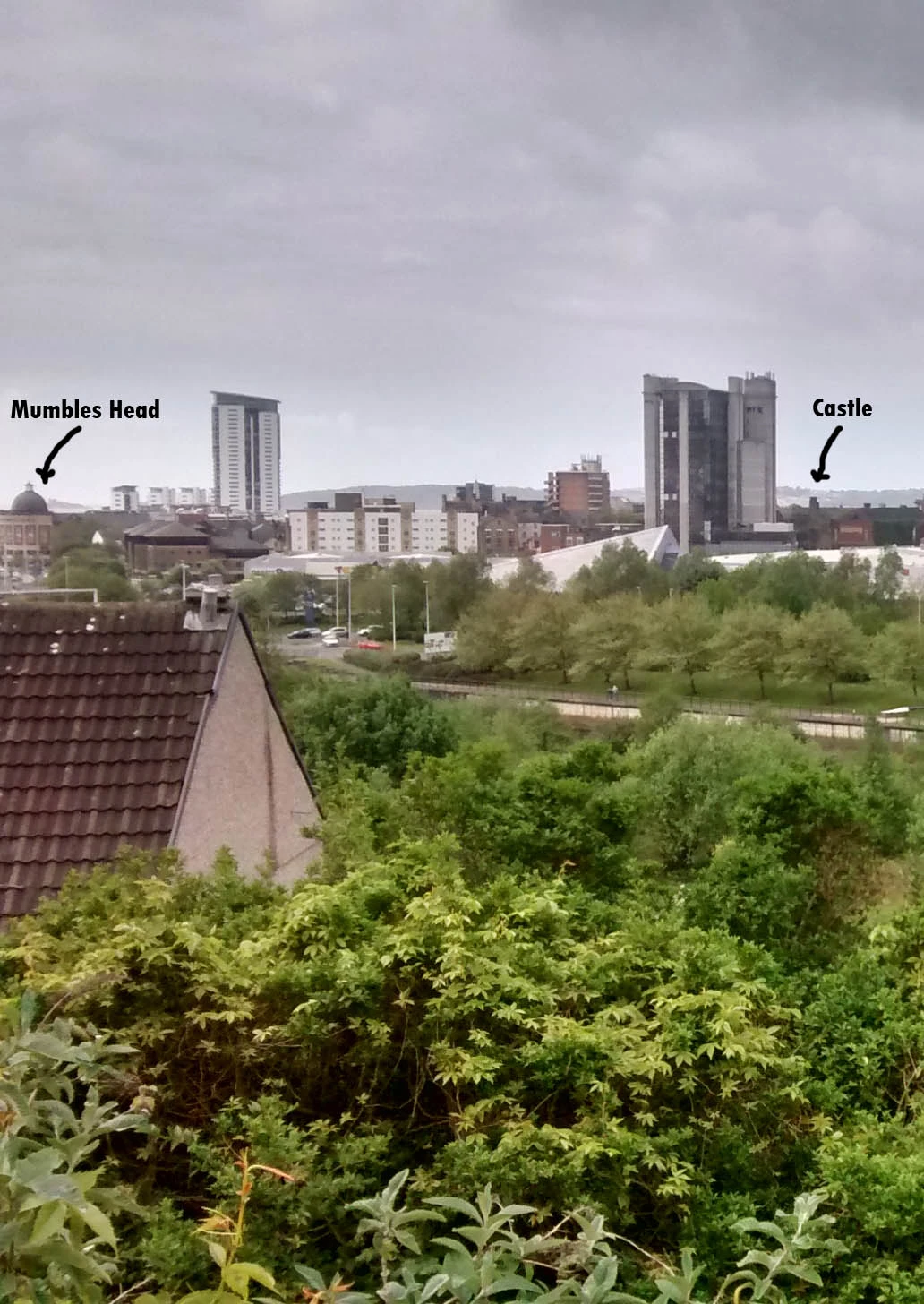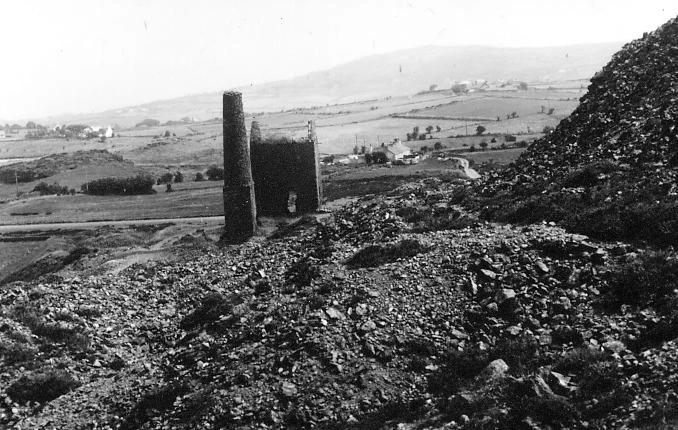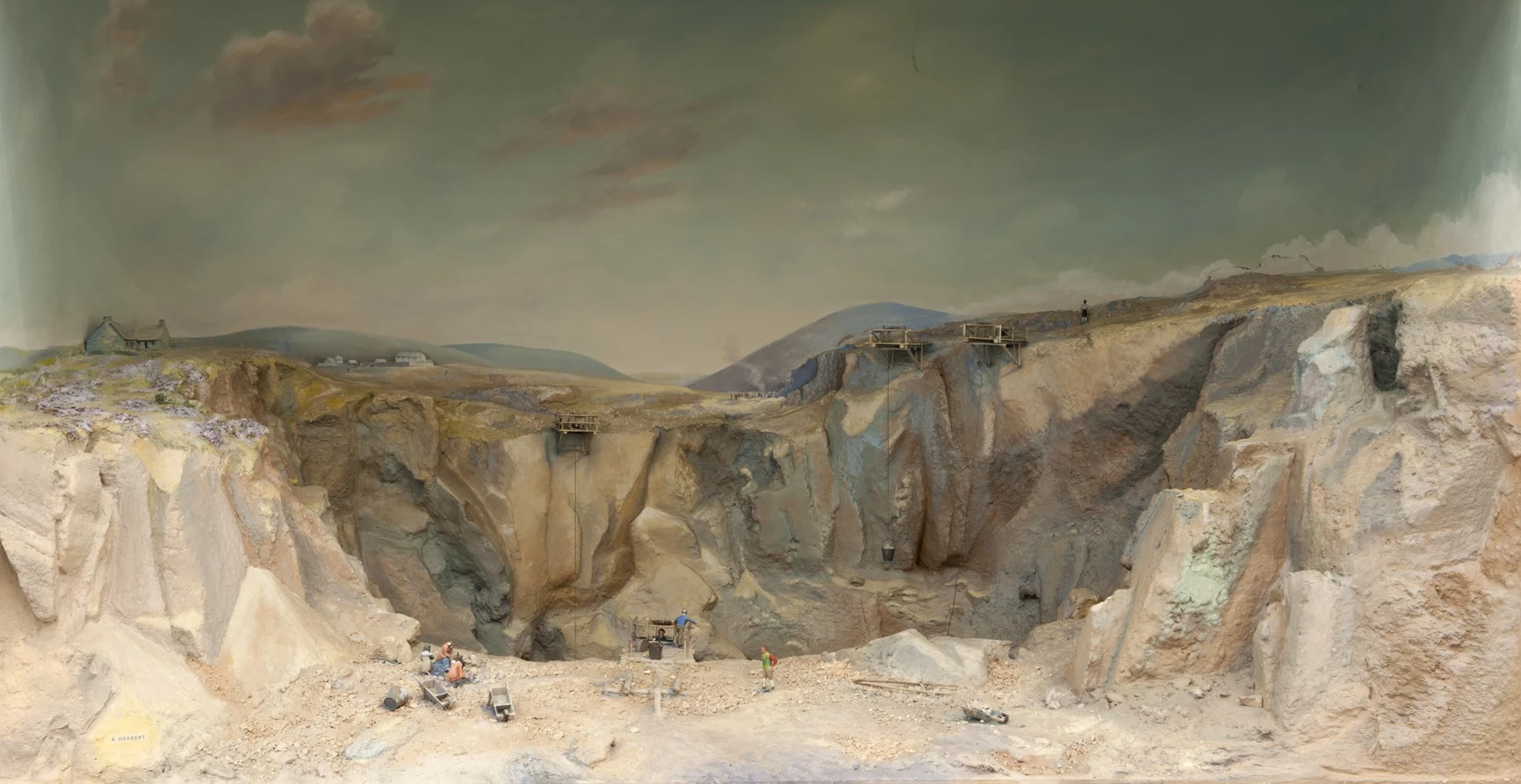View of Swansea in 1858
, 20 July 2015
Recently working through the John Dillwyn Llewelyn collection, I was reminded of this amazing photograph of Swansea taken in 1858. The image was taken on the 15 March 1858 at 1 o'clock with an exposure of 15 minutes. It was taken by Welsh photographer John Dillwyn Llewelyn using a ground breaking process invented by him in 1856 called the Oxymel process. This was a development of the wet collodion process and used a solution of acetic acid, water & honey to preserve images. This meant that glass negatives could be prepared in advance and exposed in the camera as required, and produced a dry plate that could be kept for days. This new process meant landscape photographers no longer needed to carry with them portable laboratories and darkroom tents.
The photograph shows Swansea taken from St. Thomas on the 15 March 1858. To the far left, above the roofline, Mumbles Head can just about be made out. In the background (slightly to the right) can be seen the North Dock with buildings around it, and sailing ships in the dock. In front of that is the railway embankment alongside the New Cut of the river Tawe. In the foreground can be seen a number of houses, including the 'White Lion Inn', and to the far right it is just about possible to make out the remains of Swansea Castle.
I thought that it would be interesting to try and identify the viewpoint from where this photograph was taken and to see how the view might have changed since 1858. I therefore contacted my colleague Andrew Deathe at the National Waterfront Museum, Swansea to see if his knowledge of the area would allow him to identify the viewpoint.
Living locally Andrew was able to take this modern view in May 2015. He took the photograph by standing on the road which is in the foreground of the 1858 image, which is called Bay View, in St. Thomas. The house in the original image is just behind his viewpoint. John Dillwyn Llewelyn seemed to be standing half way between Bay View and Windmill Terrace (which wasn't built for another 20 years).
The skyline of Swansea has seen many changes over the years and it is difficult to tell that the two images are taken from the same viewpoint. However it is still possible to make out Mumbles Head to the left and part of Swansea Castle to the right. The railway embankment has been completely removed, and there is no trace or it or the tunnel today. In place of the old North Dock buildings, you can see the glass pyramid of Plantasia. The tower of St. Mary's church can't be seen unfortunately, as it is behind the BT Tower.
Mark Etheridge
Curator: Industry & Transport
Follow us on Twitter - @IndustryACNMW




